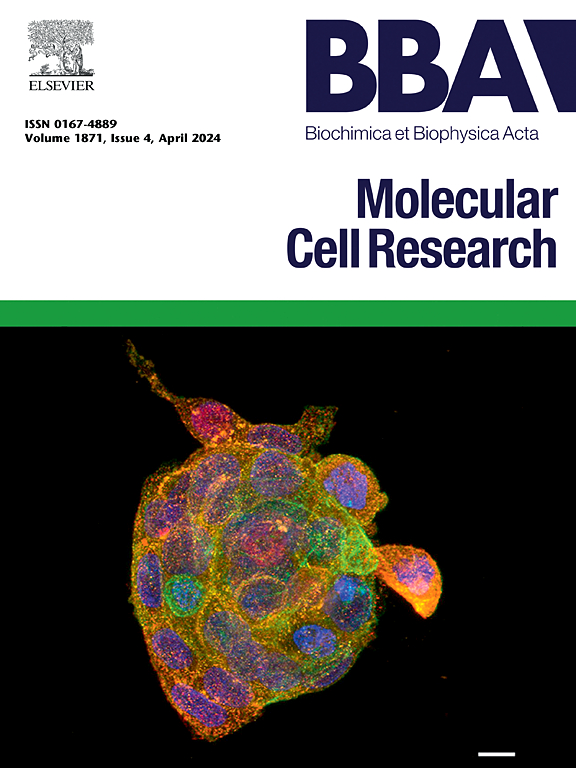Calcium-dependent regulation of physiological vs pathological cardiomyocyte hypertrophy
IF 3.7
2区 生物学
Q1 BIOCHEMISTRY & MOLECULAR BIOLOGY
Biochimica et biophysica acta. Molecular cell research
Pub Date : 2025-08-15
DOI:10.1016/j.bbamcr.2025.120046
引用次数: 0
Abstract
Cardiomyocyte hypertrophic growth contributes to the adaptative response of the heart to meet sustained increases in hemodynamic demand. While hypertrophic responses to physiological cues maintains or enhances cardiac function, when triggered by pathological cues, this response is maladaptive, associated with compromised heart function, although initially, this response maybe adaptive with preserved function. Since cues and activated pathways associated with both forms of hypertrophy overlap, the question arises as to the mechanism that determines these different outcomes. Here we evaluate the hypothesis that cardiomyocyte Ca2+ signalling – a regulator of pathological hypertrophy – also signals physiological hypertrophy. We discuss how different Ca2+ profiles, in distinct subcellular organelles/microdomains, and interacting with other signalling pathways, provide a mechanism for Ca2+ to be decoded to induce distinct hypertrophic phenotypes. We discuss how integration of computational with rich structural and functional cellular measurements can be used to decipher the role of Ca2+ in hypertrophic gene programming.
生理性与病理性心肌细胞肥大的钙依赖性调节。
心肌细胞肥厚性生长有助于心脏的适应性反应,以满足持续增加的血流动力学需求。虽然对生理信号的肥厚反应维持或增强了心功能,但当被病理信号触发时,这种反应是不适应的,与心功能受损有关,尽管最初,这种反应可能是适应性的,保留了功能。由于与两种形式的肥大相关的信号和激活通路重叠,因此决定这些不同结果的机制就产生了问题。在这里,我们评估假设心肌细胞Ca2+信号-病理肥大的调节-也信号生理肥大。我们讨论了不同的Ca2+谱,在不同的亚细胞细胞器/微域,并与其他信号通路相互作用,如何提供Ca2+被解码的机制,以诱导不同的肥厚表型。我们讨论如何集成计算与丰富的结构和功能细胞测量可以用来破译Ca2+在肥厚基因编程中的作用。
本文章由计算机程序翻译,如有差异,请以英文原文为准。
求助全文
约1分钟内获得全文
求助全文
来源期刊
CiteScore
10.00
自引率
2.00%
发文量
151
审稿时长
44 days
期刊介绍:
BBA Molecular Cell Research focuses on understanding the mechanisms of cellular processes at the molecular level. These include aspects of cellular signaling, signal transduction, cell cycle, apoptosis, intracellular trafficking, secretory and endocytic pathways, biogenesis of cell organelles, cytoskeletal structures, cellular interactions, cell/tissue differentiation and cellular enzymology. Also included are studies at the interface between Cell Biology and Biophysics which apply for example novel imaging methods for characterizing cellular processes.

 求助内容:
求助内容: 应助结果提醒方式:
应助结果提醒方式:


